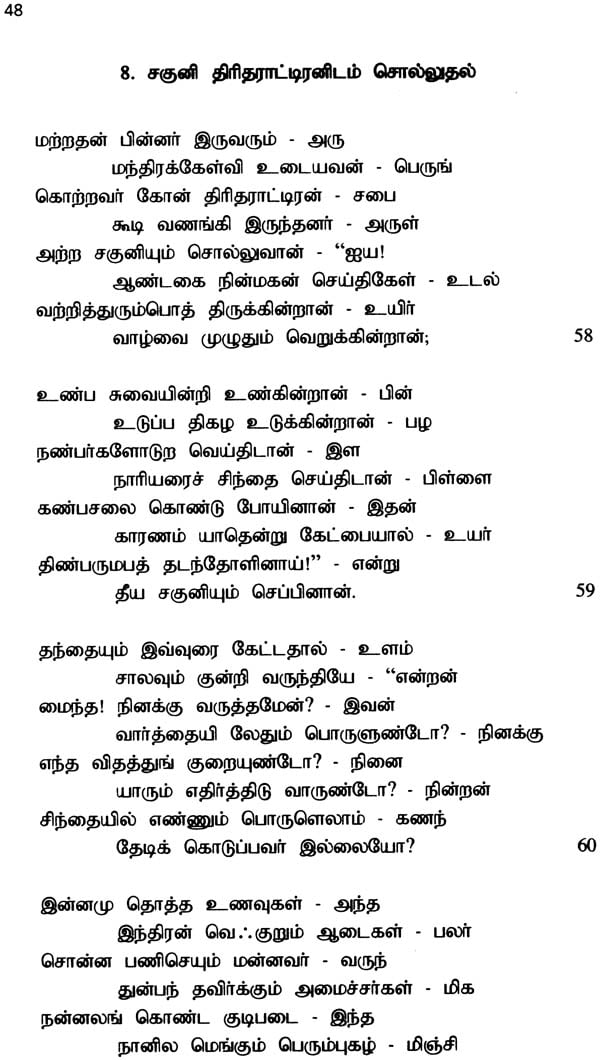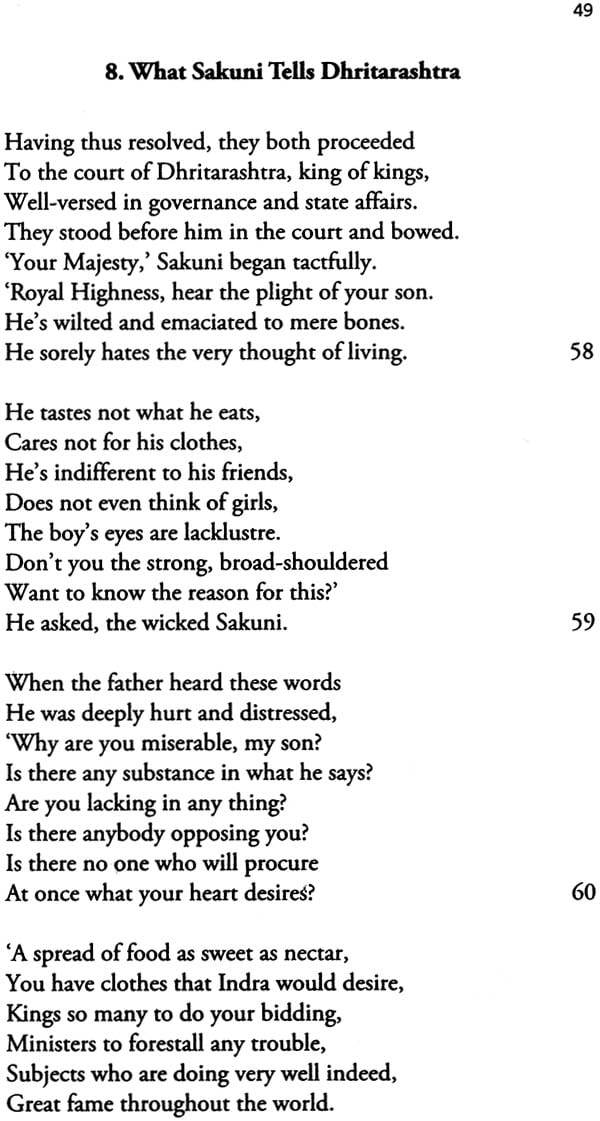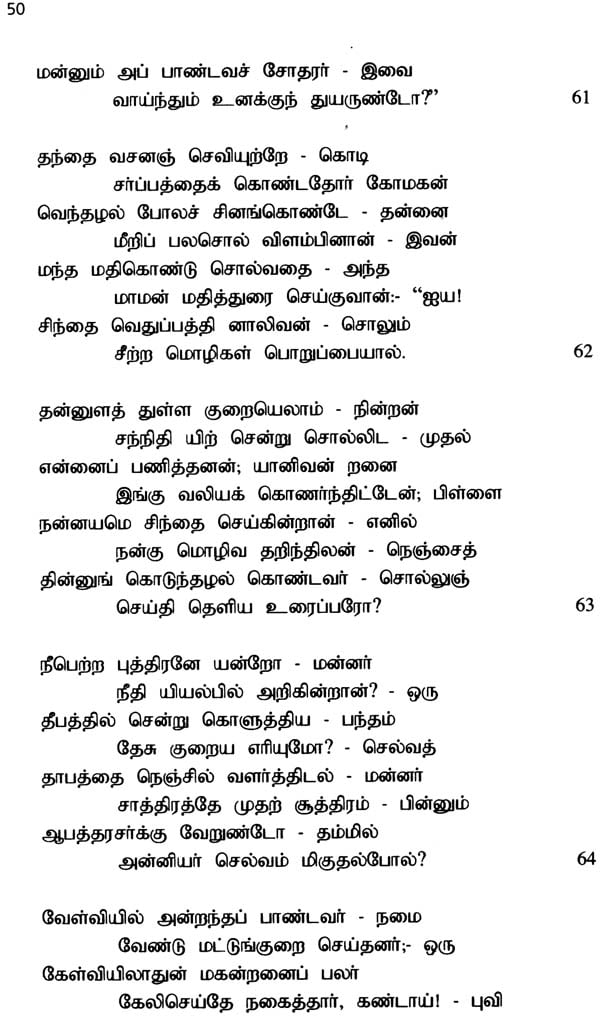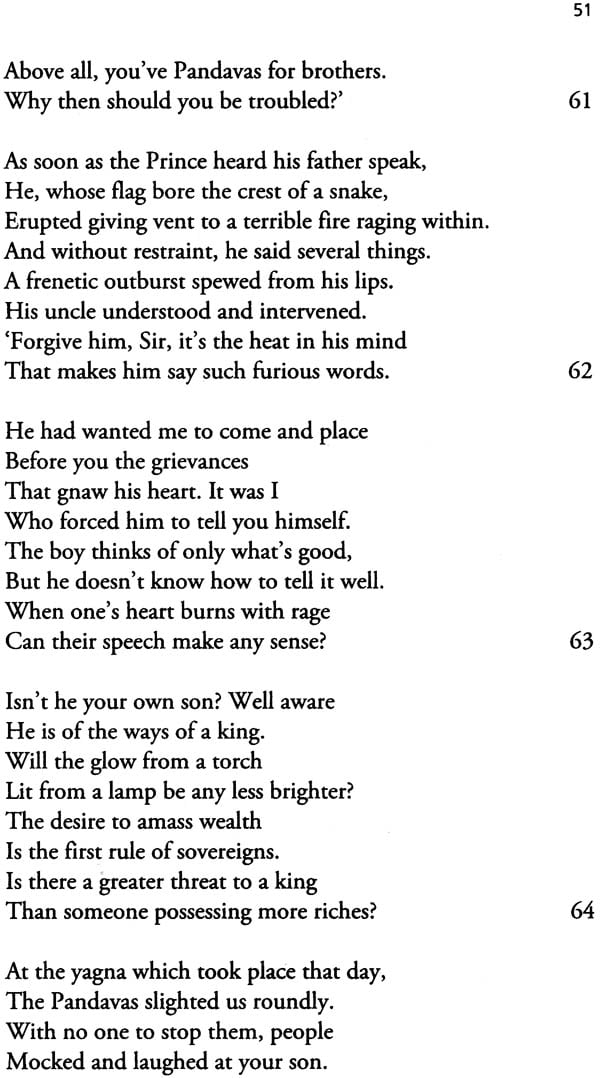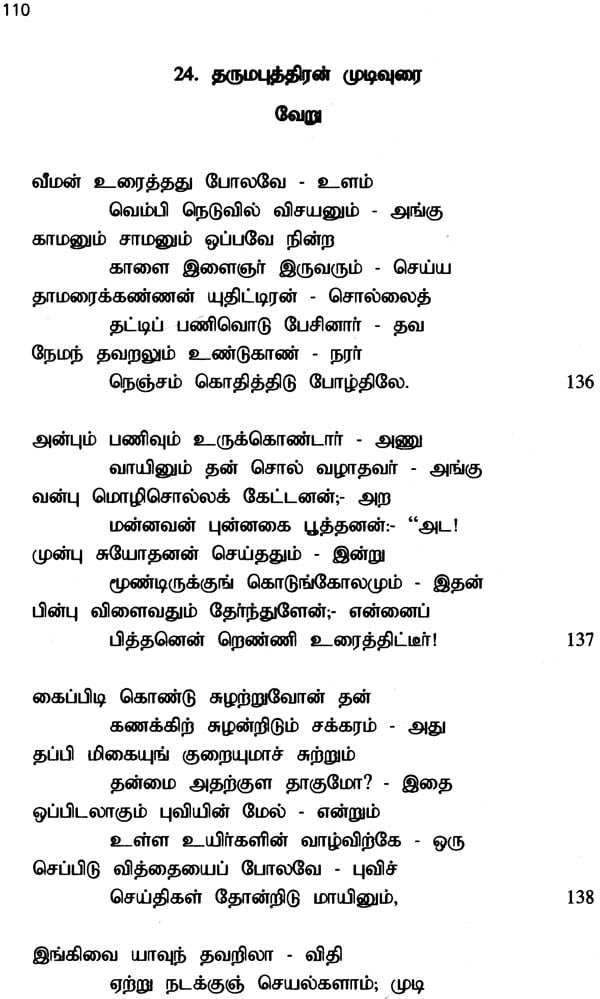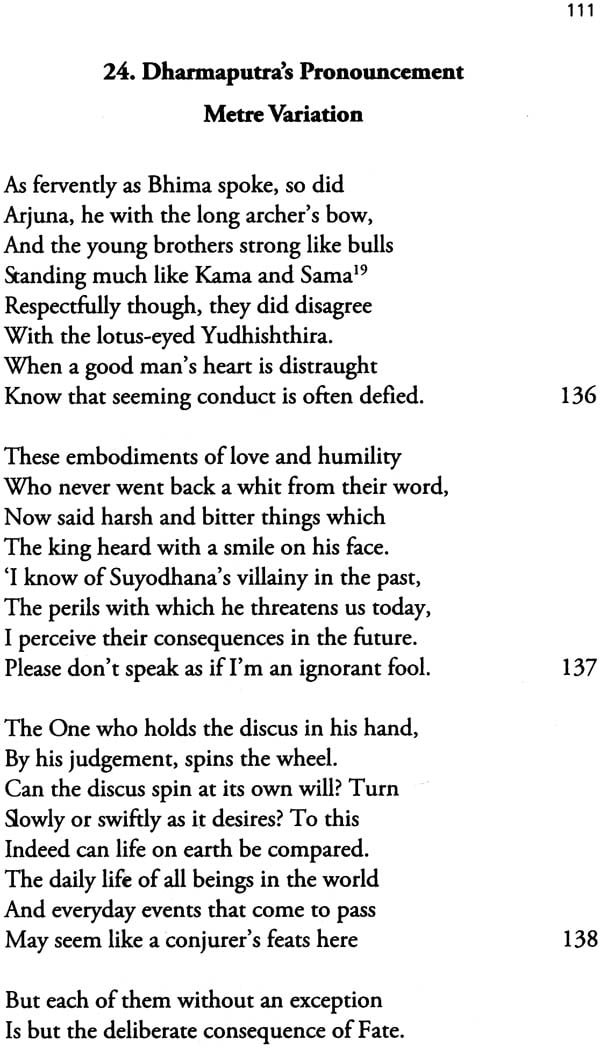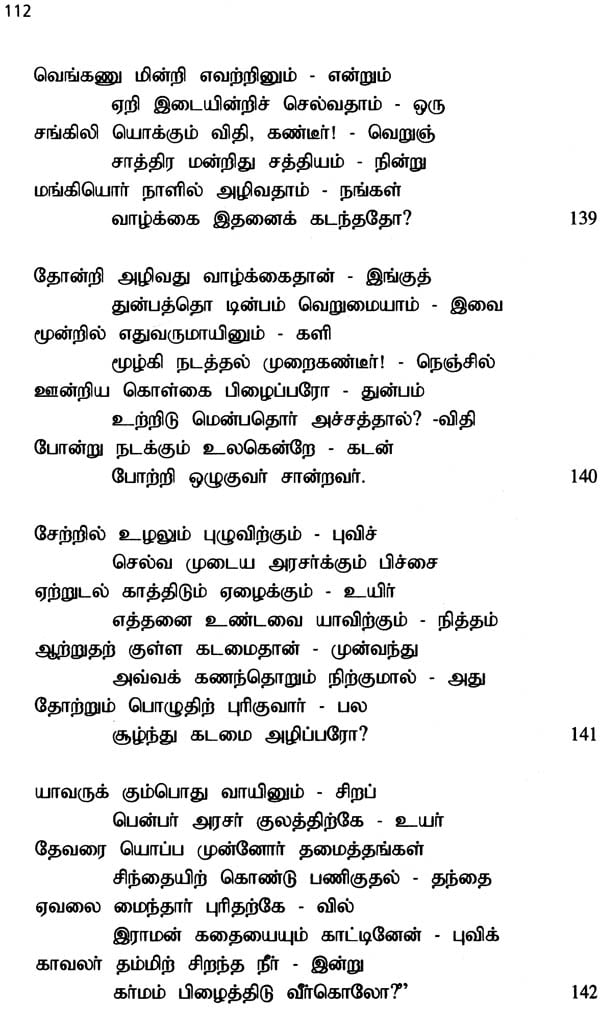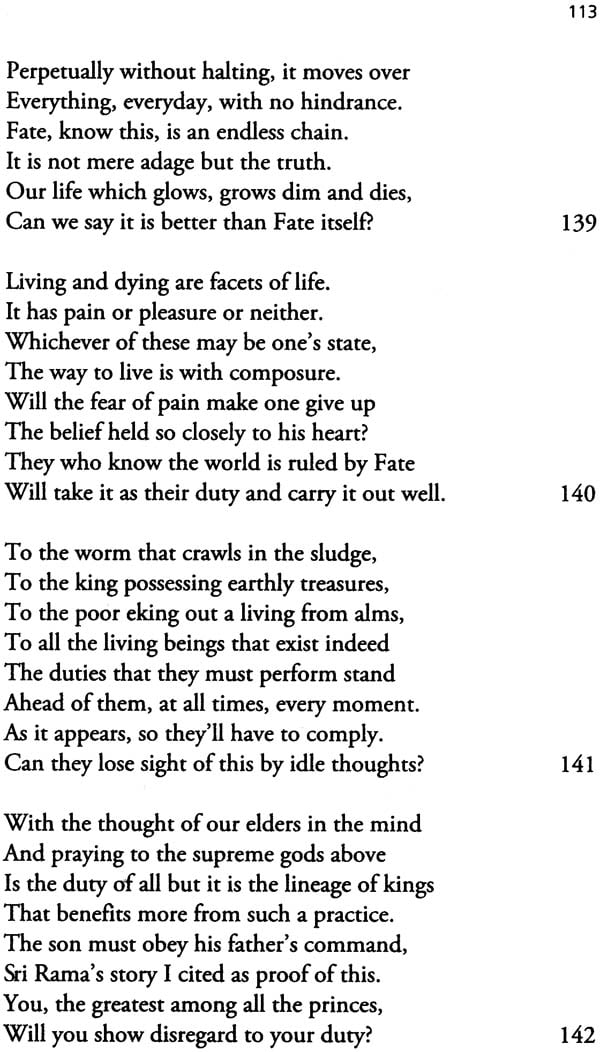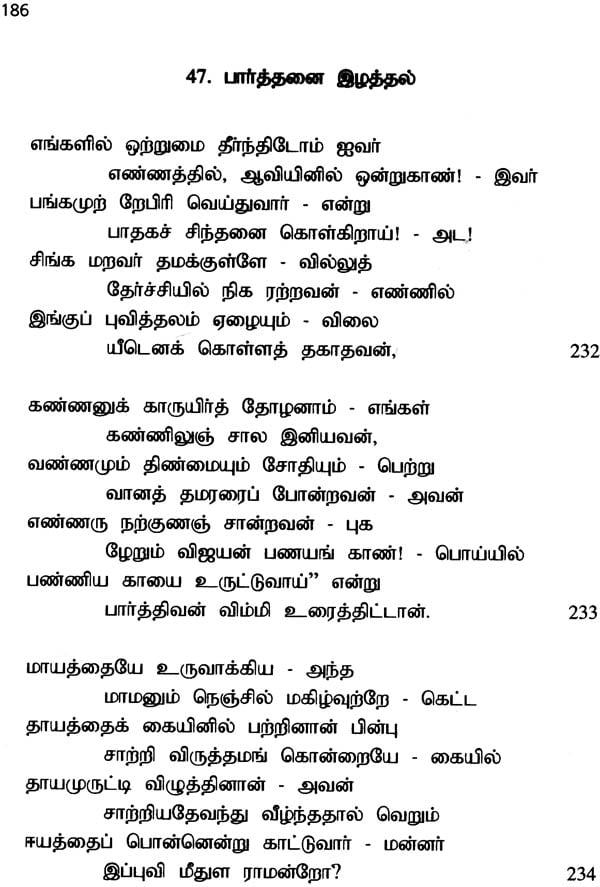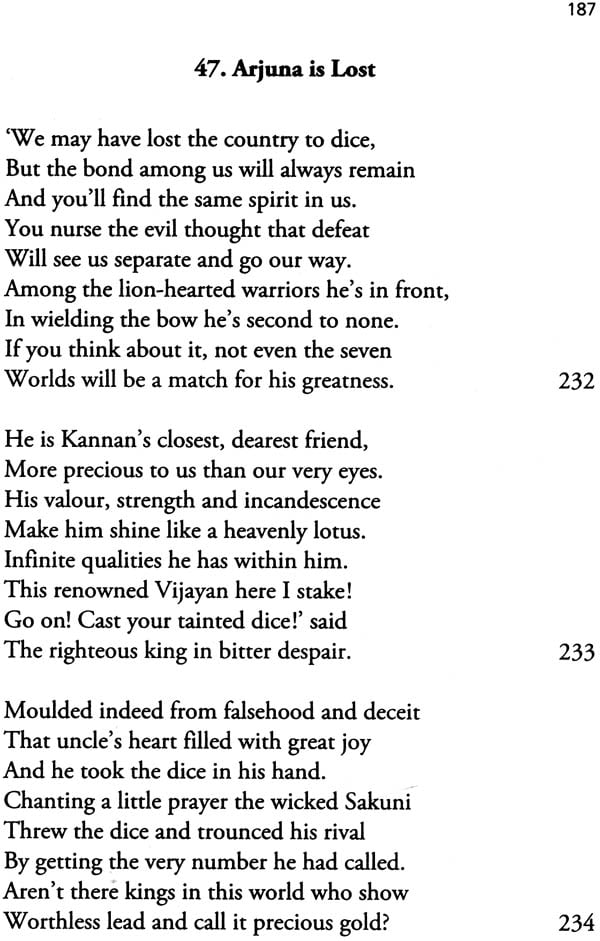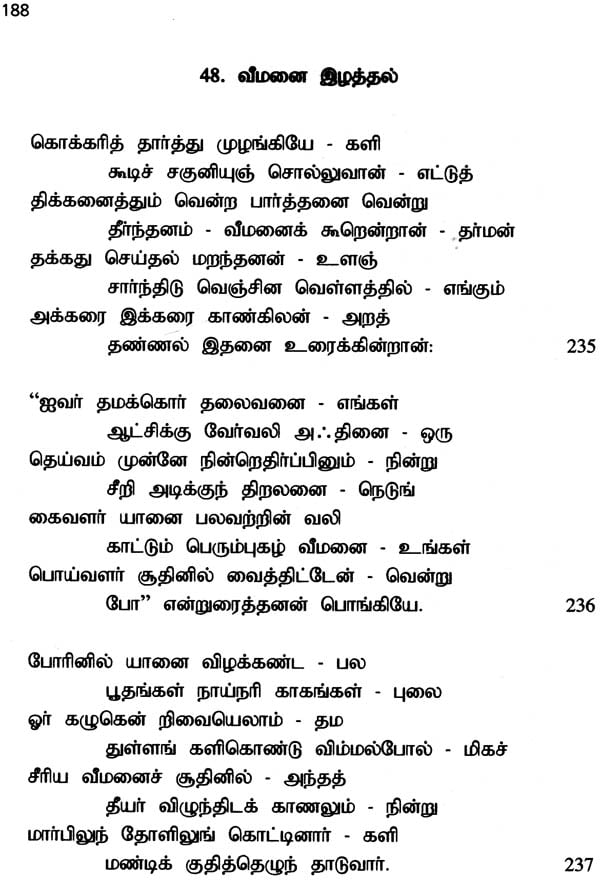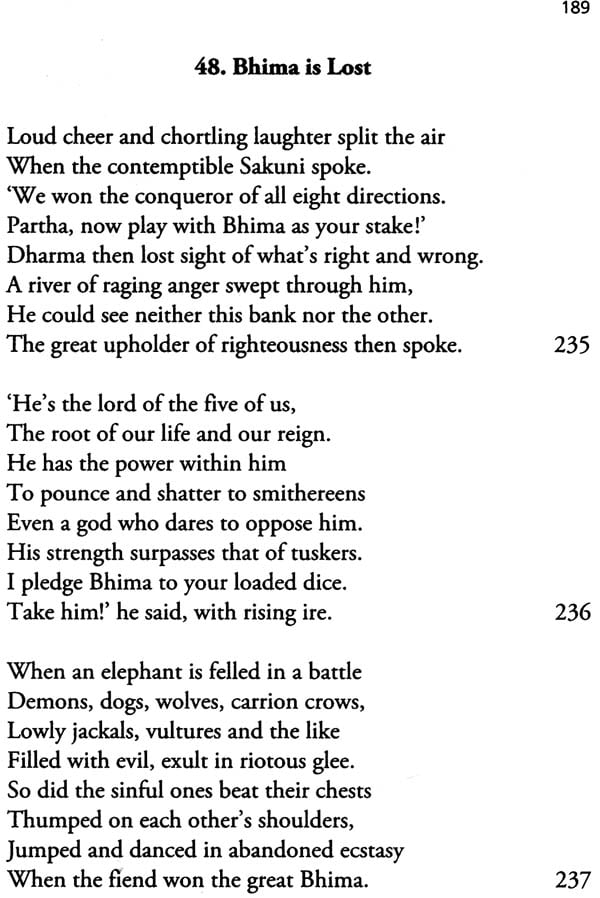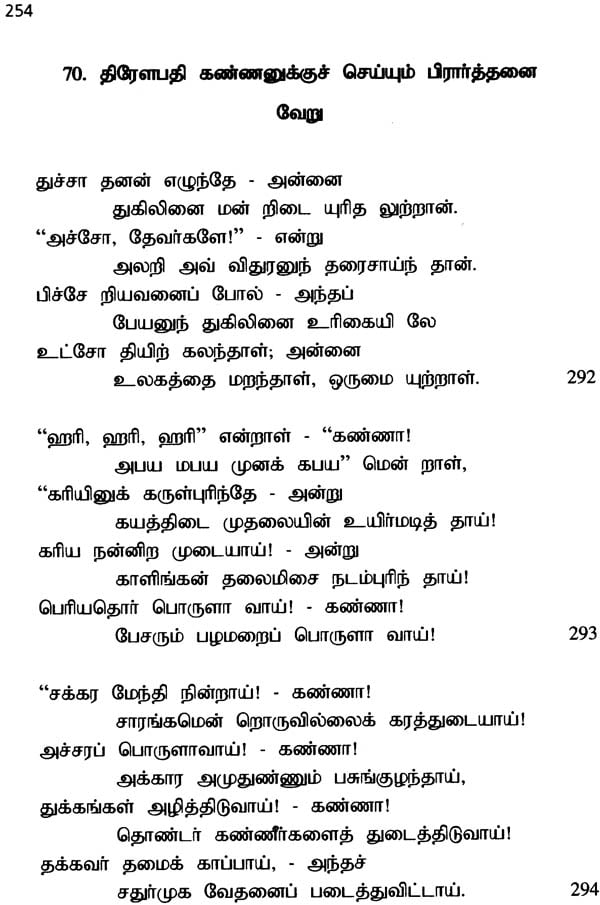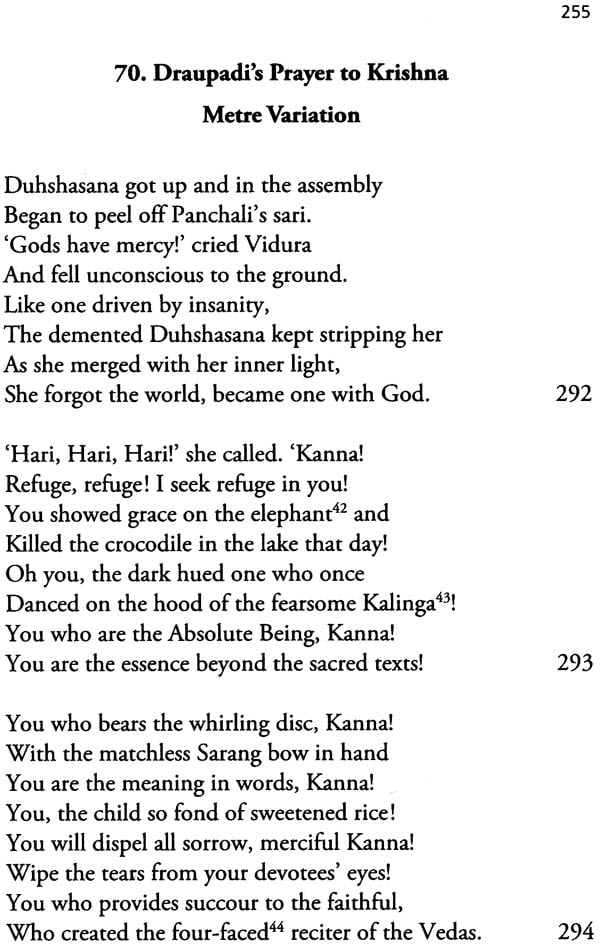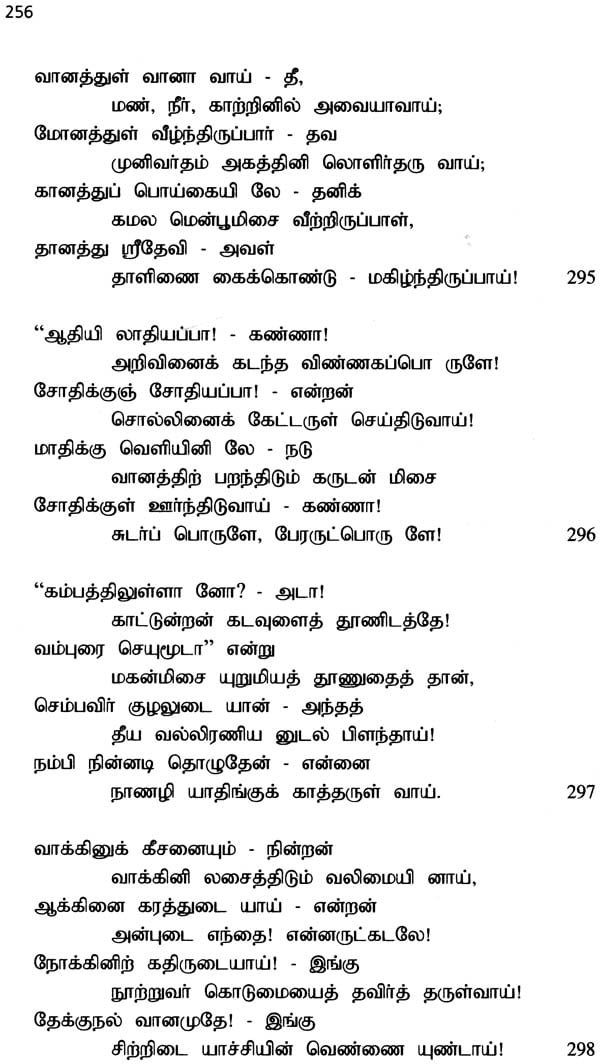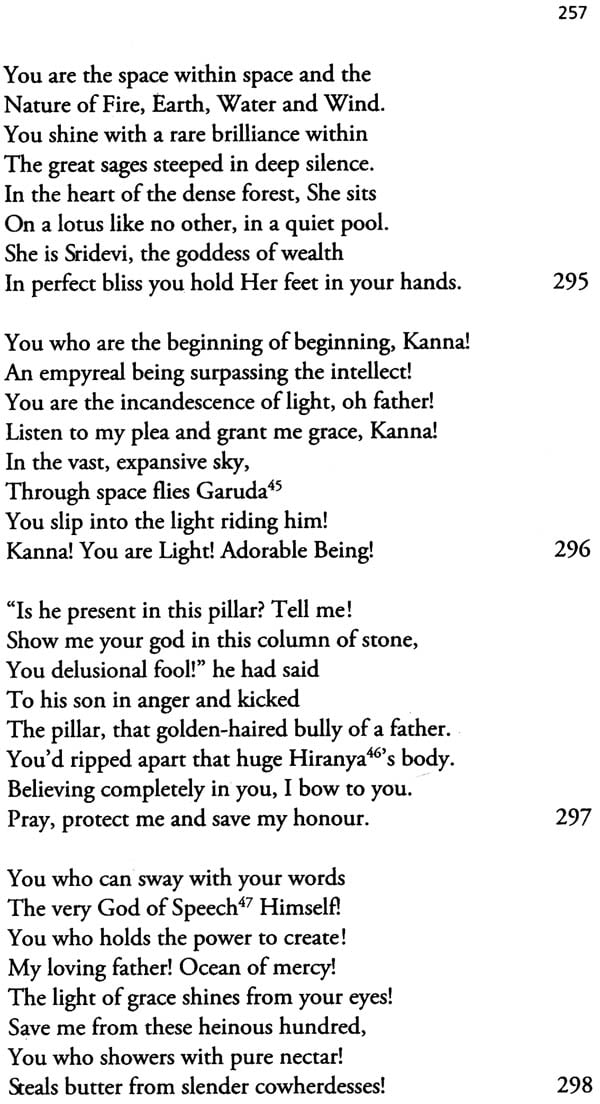
Panchali's Pledge (Panchali Sabadham)
Book Specification
| Item Code: | NAF744 |
| Author: | Subramania Bharati and Usha Rajagopalan |
| Publisher: | Hachette India |
| Language: | English |
| Edition: | 2012 |
| ISBN: | 9789350095195 |
| Pages: | 290 |
| Cover: | Paperback |
| Other Details | 8.0 inch x 5.0 inch |
| Weight | 220 gm |
Book Description
Public honoured wh en he was a mere boy o feleven with the title ‘Bharati’ (one blessed by Saraswati, the Goddess of Learning), C. Subramania Bharati (1882-1921) is renowned as the herald of the renaissance in Tamil literature. The simplicity and lyricism that marked his poetry reflect a clear shift in sensibility and craft from the classical tradition, which had adhered to strictures of style, imagery and language for over 2000 years. Panchali’s Pledge is the English translation of Bharati’s seminal work, Panchali Sabadham, which reimagines the pivotal game of Dice incident in the Mahabharata, where coerced into playing a game of dice by Duryodhana and Sakuni, Yudhisthira, the eldest of the Pandavas, stakes and loses his kingdom, his wealth, his brothers and finally his wife, Draupadi, Enraged at the quiet indifference of those present in the assembly to her plight, Draupadi finally takes a pledge to avenge her ignominy with the bold of the Kauravas. Bharati wrote published the first of the two –part minor epic in 1912 while living in the French territory of Pondicherry to escape British persecution. It was intended as a political allegory of the ongoing freedom movement and as an affirmation of the latent power in women. Usha Rajagopalan’s translation seeks to complement what Bharati himself set out to do with the original text: to ‘create an epic using simple pharases, a simple style, easily understood prosody and rhythm which the common man appreciates’.
C. Subramania Bharati (1882-1921) was born in a Tamil Brahmin family of moderate means in Ettayapuram in the erstwhile Tirunelveli district of Tamil Nadu. Young 'Subbayya' as he was called as a child lost his mother, Lakshmi, before the age of five and was brought up by his father Chinnaswami Iyer, a scholar and disciplinarian who wanted the boy to learn English, excel in Arithmetic and become an engineer. However, even as a child, Subbayya displayed a remarkable gift for poetry and preferred to watch the river flow and hear the leaves rustle rather than stay confined within the walls of the anglo-vernacular School. Though he struggled with arithmetic, he excelled in composing impromptu Tamil verses which entranced his listeners. So prodigious was his talent that when he was eleven the boy was given the title of 'Bharati' (one blessed by Saraswati, the Goddess of Learning) at an assembly of scholars and poets in Ettayapuram.
Chinnaswami, proud of his son's gift but seeing no secure future for a poet, got the young Subbayya admitted to the Hindu College High School in Tirunelveli paying hefty fees for his son's education in English. That failed too because Bharati was increasingly losing himself in reading and writing poetry.
Marriage at the age of 14 to Chellamma, half his age, did not make him change his ways. What did, however, was his father's death a year later. It made him realize his responsibility as a family man. His stepmother moved to her parents' home with her children and Bharati went to Benares to complete his education. Here he immersed himself in learning new languages, including English, and discovering their literature. He was indeed so fascinated with the Romantic poets, especially P.B. Shelley, that he tried to write like him under the pseudonym 'Shelley Dasan' (Shelley's disciple). He would soon find his own voice and forge his individual style and idiom which aimed at reaching out to the common man. The simplicity of his language and clarity of expression caused twentieth-century Tamil literature to be called 'The Age of Bharati' and marked the start of a new and modern era. Despite all the troubles in his life, most of them financial, Bharati wrote prodigiously - not just poetry but also essays, political commentaries and short stories along with translations of the Gita, Vedic hymns and some of Rabindranath Tagore's short stories into Tamil.
As a poet, Bharati wrote on a vast range of themes opting initially to write them in the shorter lyric form. His nationalistic essays and poems in the Tamil daily, Swadesa Mithran, of which he was sub-editor, and in India, of which he was the de facto editor, had set the British police on his heels. On the advice of his friends he fled to Pondicherry in 1908. This prompted several other political exiles and revolutionaries such as Mandayam Srinivasachariar, Subramania Siva, V.V.S. Aiyar, an associate of Veer Savarkar, and Sri Aurobindo to do likewise. In fact, it was Srinivasachariar and Bharati who helped Sri Aurobindo settle down when he arrived in Pondicherry on 4 April 1910. Bharati and Sri Aurobindo spent long hours together discussing literature and spiritual texts, reading and researching the Vedas. It was perhaps this heightened awareness of the self and the supreme which inspired Bharati to write some of his best and major works in this period, namely 'Kannan Paattu', 'Kuyil Paattu', Panchali Sabadham, and the Tamil translation of the Bhagavad Gita.
'Kannan Paattu' (Songs of Krishna) is a set of 23 evocative lyrics in which he portrays Sri Krishna variously as a child, friend, father, mother, servant, king, teacher, lover, beloved and God. 'Kuyil Paattu' (Koel s Song) is an abstruse narrative poem of about 750 lines which reads like a fable. Panchali Sabadham (Panchali's Pledge) is based on the pivotal Game of Dice incident in the Mahabharata. In the preface to the first part published in 1912, Bharati wrote:
'One who writes an epic using simple phrases, a simple style, easily understood prosody and rhythm which the common man appreciates, would infuse a new lease of life to our mother tongue. It should be written such that even Tamil speakers with little literary knowledge will understand. At the same time, the writer must not compromise with the beauty of poetry.
Such a task is Herculean and my talent is limited. I have published this is a work of love; not as a benchmark for others but to show them the path.
Despite his modest claim, Panchali Sabadham set a new benchmark in Tamil poetry. It is a rich and texture poem in five cantos with the epic features of invocation, larger-than-life heroes and anti-heroes, evocative language and the timeless theme of confrontation between good and evil.
For Bharati, who wrote Panchali Sabadham while living in exile in Pondicherry to escape British persecution, the immediate provocation was no doubt political. The figure of Draupadi is symbolic of Mother India robbed of her freedom and also of the Indian woman who suffers indignity and oppression in the n ame of tradition. Draupadi is also the manifestation of the Mother Goddess, Shakti, come to vaniquish evil and established good. By invoking the name of Shakti, all crises can be resolved. Just as the Pandavas queen will win freedom for their country and women will break the shackles imposed by patriarchy and seek liberation for themselves.
| Acknowledgements | ix |
| Major Milestones in Bharati's Life | xi |
| Introduction | xv |
| Panchali's Pledge | 3 |
| Notes | 268 |
